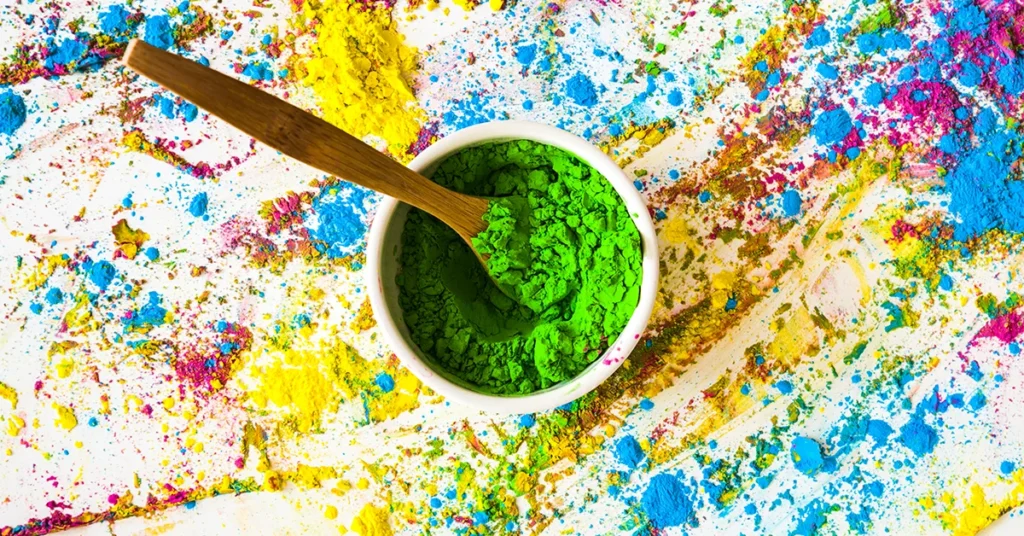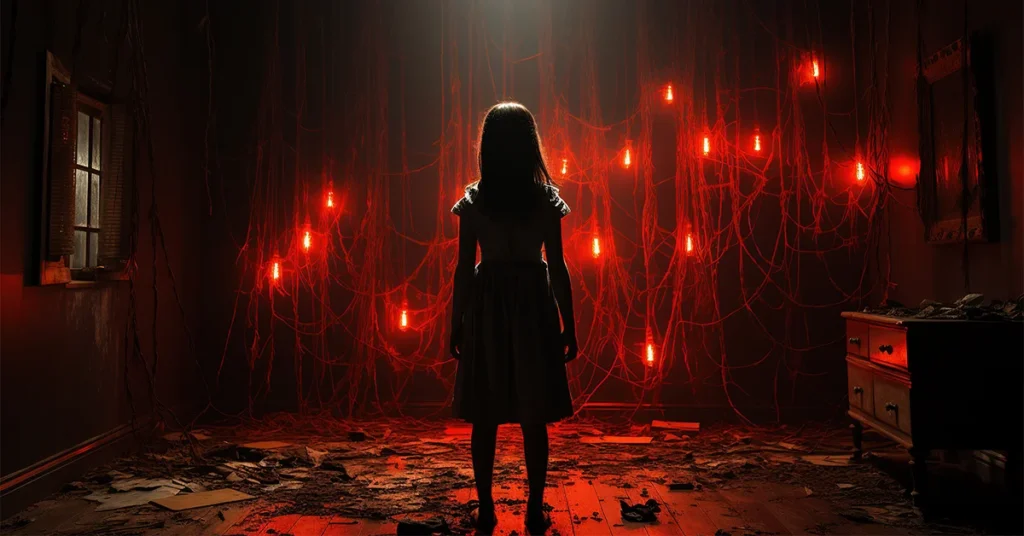From the lush canopies of rainforests to the deep emerald tones of gemstones, the color green has always symbolized life, renewal, and growth. But have you ever wondered how this soothing color found its way into our fabrics, paints, and everyday products? The secret behind green dye is more fascinating than you might imagine — blending ancient craftsmanship, natural chemistry, and modern innovation into one colorful story.
Today, green is everywhere — in fashion, art, branding, and design. But the journey of how this color is created, refined, and used reveals a lot about human creativity and our connection to nature. Let’s explore the origins, science, and evolution of green dye, and uncover why it continues to be one of the most versatile colors in nature and beyond.
ALSO READ: Discover The Joy Of Yarting: Where Art Meets The Yard
The Origins Of Green: Nature’s Palette
Before synthetic dyes existed, all colors came directly from the earth — plants, minerals, and even insects. Green, in particular, was one of the most sought-after colors throughout history, yet also one of the most challenging to produce naturally.
Ancient Roots
In ancient civilizations such as Egypt, Greece, and Rome, artisans experimented with various natural materials to create green hues. They used substances like malachite, a copper carbonate mineral, and mixed it with other natural compounds to achieve stable pigments for wall paintings and decorations.
In textiles, however, the story was trickier. Early dyers found that pure green dyes were difficult to achieve because most green-producing plants faded quickly or turned brown over time. Instead, they learned to layer colors — dyeing fabric first with yellow (from plants like weld or saffron) and then over-dyeing it with blue (from woad or indigo). This blending technique created deeper, more durable shades of green.
The Symbolism Of Green Through The Ages
Colors are more than just visual experiences — they carry deep cultural and emotional meanings. Green’s symbolism has evolved throughout human history.
- In Ancient Egypt, green represented fertility and rebirth. The god Osiris, who symbolized the afterlife, was often depicted with green skin.
- In Medieval Europe, green stood for youth, love, and growth — but it was also associated with envy and deception.
- In Islam, green holds sacred significance, symbolizing paradise and peace.
- In Modern Times, green has become a universal symbol of nature, sustainability, and balance.
From sacred art to corporate logos, the color continues to represent renewal and harmony — a reflection of our timeless bond with the natural world.
The Natural Sources Of Green Dye
So, where exactly does green dye come from? Surprisingly, few plants naturally produce a strong green pigment suitable for dyeing fabric. Instead, dyers have historically relied on combinations or chemical reactions to create lasting shades.
Common Natural Sources of Green Dye
Spinach (Spinacia oleracea) – Known for its chlorophyll, spinach can create a soft, pale green tint, though it fades easily.
Nettle (Urtica dioica) – Produces a slightly darker green, especially when used with iron mordants.
Dock leaves and sorrel – Offer earthy green-brown tones.
Ivy and elder leaves – Used in folk dyeing traditions across Europe for muted greens.
Chlorophyll extract – In modern natural dyeing, chlorophyll is extracted to create eco-friendly dyes and pigments.
The Role of Mordants
A mordant is a substance used to fix dye onto fabric, ensuring the color remains vibrant and long-lasting. Natural mordants include alum, iron, and copper, each influencing the final hue. For example, alum produces bright greens, while iron darkens the tone.
The Chemistry Of Green Dye
The science behind green dye is all about the interaction between color molecules and fibers.
Chlorophyll: The Green Pigment of Life
At the heart of most natural greens lies chlorophyll — the molecule responsible for photosynthesis in plants. However, chlorophyll is unstable when exposed to heat or light, which makes it unsuitable for permanent dyeing on its own. Scientists and dyers have learned to stabilize it through various chemical treatments, allowing its pigment to be used in cosmetics, food coloring, and textiles.
Mixing Colors
When natural chlorophyll isn’t enough, dyers mix blue and yellow dyes to produce a green. This is both an art and a science — the balance between blue (indigo) and yellow (weld, turmeric, or onion skins) determines the final shade, from minty pastels to deep forest tones.
The Evolution Of Synthetic Green Dyes
The 19th century marked a revolution in color technology. With the invention of synthetic dyes, green became more accessible, vibrant, and durable than ever before.
Scheele’s Green and Paris Green
In the late 1700s, a Swedish chemist named Carl Wilhelm Scheele developed Scheele’s Green, a brilliant pigment derived from copper arsenite. Later, Paris Green — another arsenic-based pigment — became popular in wallpapers, clothing, and paints.
Unfortunately, these early synthetic greens were toxic, causing health problems and even deaths due to arsenic poisoning. They were eventually replaced by safer chemical alternatives in the 20th century.
Modern Synthetic Greens
Today, green dyes are made using safe organic compounds such as phthalocyanines and azo dyes. These offer long-lasting, bright hues that resist fading — essential for modern fashion, printing, and product design.
The Role Of Green In Modern Design And Fashion
Green isn’t just a color — it’s a message. In modern branding and fashion, green communicates sustainability, freshness, and growth.
- In fashion, designers use shades of green to represent eco-consciousness and balance with nature.
- In interior design, green tones create calm, restorative spaces — perfect for reducing stress.
- In branding, companies use green to convey trust, health, and environmental responsibility (think of organic products, eco labels, and tech companies).
The versatility of green dye allows it to fit into both natural and futuristic aesthetics — from earthy olive tones to vibrant neon greens.
Eco-Friendly And Sustainable Green Dyes
As sustainability becomes a global priority, the textile and dyeing industries are turning back to nature for inspiration. Eco-friendly dyeing processes aim to minimize pollution and waste while maintaining color vibrancy.
Natural Dye Revival
Artisans and small businesses are reviving the use of plant-based green dyes that are biodegradable and non-toxic. Natural dyeing workshops are growing in popularity among those seeking a deeper connection with traditional craftsmanship.
Biotechnology and Green Innovation
Scientists are exploring bio-dyes made from algae and bacteria, offering a sustainable alternative to chemical dyes. These innovations can create stable green pigments without the environmental harm associated with synthetic dyes.
The Future Of Green Dye
The future of green dye lies at the intersection of science and sustainability. With advanced research, we are discovering new ways to produce vibrant, eco-friendly greens using renewable resources.
Imagine fabrics dyed using microorganisms that consume carbon dioxide, or pigments created entirely from agricultural waste — the possibilities are endless. Green dye, once elusive, is now becoming a symbol of innovation and environmental consciousness.
Fun Facts About Green Dye
The color green is the easiest on the human eye, making it calming and easy to look at for long periods.
Some of the world’s most famous artworks, like Da Vinci’s paintings, used green pigments derived from malachite and verdigris.
During the 18th century, green-dyed wallpapers were notorious for making people sick due to arsenic pigments.
Verdigris, a green patina seen on copper and bronze, inspired ancient dye makers.
Today, food-safe green dyes often come from chlorophyll or spirulina extracts.
Conclusion
The story of green dye is a reflection of humanity’s endless curiosity and creativity. From the first attempts to extract pigments from leaves and minerals to today’s sustainable dye technologies, green has always symbolized life, renewal, and hope.
As we continue to move toward a more sustainable world, the return to natural dyes and eco-friendly methods reminds us that sometimes, the answers we seek lie in the very nature we aim to protect.
So, the next time you wear a green shirt or paint a wall in sage or emerald, remember — you’re not just embracing a color. You’re wearing centuries of history, science, and artistry woven into every shade.
FAQs
What is green dye made from?
Green dye can be made from natural sources such as plants (like nettles, spinach, and ivy) or synthesized chemically in laboratories. Modern eco-friendly dyes often use chlorophyll or algae-based pigments for a sustainable approach.
Why was green dye considered dangerous in the past?
In the 18th and 19th centuries, green dyes like Scheele’s Green and Paris Green contained arsenic, a toxic substance that caused serious health issues. These dyes were later banned and replaced with safer alternatives.
Can you make green dye at home naturally?
Yes! You can make natural green dye using spinach leaves, nettles, or other green plants. Boil them in water, strain the liquid, and use it as a natural dye for fabric or paper. Using a mordant helps make the color last longer.
Is green dye eco-friendly today?
Many modern green dyes are designed to be environmentally friendly, using natural ingredients or low-impact synthetic processes that reduce water waste and pollution.
What does the color green symbolize in fashion and design?
Green symbolizes balance, harmony, and renewal. In fashion and design, it’s often used to represent sustainability, freshness, and a connection to nature.
ALSO READ: Twili Trends: Exploring The Future Of Seamless Communication


